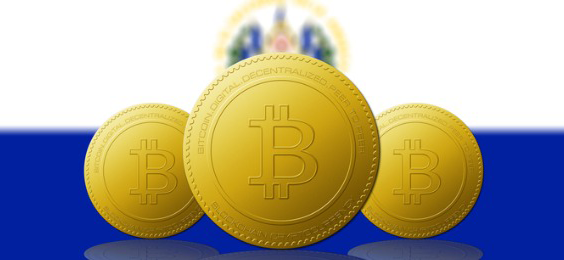It was one of the greatest scientific achievements of our time.
In 1990, scientists from the U.S., China, Australia, United Kingdom and France joined forces.
The project cost: $3 billion.
The objective: Decode the first human genome.
Most scientists believed this would be the catalyst to unraveling the “secret code of life.” This information would provide a roadmap to understanding all diseases and developing life-saving drugs.
It took 13 years, but the project came to a successful completion. Scientists decoded the first human genome.
This research — published for the world to see — gives us a better understanding of the building blocks inside each human. It allows doctors to study genes associated with cancers, diabetes or thousands of other genetic diseases.
Finding these “risky” genes early could save lives.
Maybe even yours …
The Rise of Gene Sequencing
After the study was released, President Bill Clinton said:
“Without a doubt, this is the most important, most wondrous map ever produced by humankind.”
Healthcare experts were also optimistic. They predicted DNA sequencing would open the door to new life-saving treatments over the next 10 years.
However, this technology has not progressed at the speed most predicted.
There’s been no windfall of life-saving treatments, diagnostic technologies or significant breakthroughs into 21st-century disease.
Some say there aren’t enough experts in the genetics field that have the training and know-how to help implement this technology on patients.
Others believe revolutions in medicine to target gene mutations have just been slow to develop.
But these theories are missing the much bigger point …
And it’s the reason why gene sequencing is about to become one of the biggest trends in healthcare.
In 2001, the cost to sequence an individual’s genome was $100 million. This included dozens — if not hundreds — of technicians working full-time while using the fastest computers available.
In 2011, the cost to sequence an individual’s genome dropped dramatically to roughly $10,000. That’s a massive reduction in just a decade.
At $10,000, gene sequencing was still expensive for the average person. After all, health insurance companies do not reimburse patients for this type of test.
That means, you would have to pay the full amount (out-of-pocket) to get your DNA tested.
Today, the current cost to sequence your genome is roughly $1,000.
To put this in perspective, it’s as if the price of the new Apple Watch dropped from $500 to a nickel.
That translates from a few million people owning the Apple Watch to a few billion.
The chart above also compares the huge drop in prices against Moore’s Law — that computer power doubles every two years at half the cost.
As you can see, real-world advances in gene sequencing are moving at lightning speed compared to Moore’s Law.
The Future is Now for Gene Sequencing
At less than $1,000, demand for DNA sequencing is already starting to climb.
Plus, companies are able to store this enormous amount of data (and analyze it) at a fraction of the cost compared to a few years ago.
In short, DNA sequencing is becoming the game-changing trend that experts predicted 10 years ago.
Companies within this industry could soon see windfall profits, which could result in huge returns for investors.
It will be similar to what we saw with personal computers (PCs) over the past few decades.
For example, the first computer in the 1970s cost upward of $500,000. It weighted 30 tons and took up nearly 2,000 square feet of space.
By the 1990s, companies like Xerox, Tandy, Commodore and IBM entered the market. They competed against each other offering smaller and faster computers each year.
This resulted in a huge fall in the price of the PC — making the computer affordable for more people.
Today, it’s difficult to find someone who does not own a PC (or mobile phone) used to search the Internet.
We should see the same demand for DNA sequencing.
As the cost continues to fall, more people may run to get their DNA tested. After all, this test identifies (with a high degree of accuracy) which diseases someone is likely to contract over the rest of their life.
For example, if the test shows someone is at high risk of heart disease, they can change their eating habits. If the test shows someone at high risk of getting skin cancer, they can wear sunscreen or maybe take their daily run after the sun sets.
This information will be priceless for those who want to watch their kids grow up … travel the world after retirement … or live longer and healthier.
There are several gene sequencing companies that are dominators in the space. This includes Illumina and Thermo Fisher Scientific (which acquired Life Technologies in 2013).
Both stocks trade in the triple-digits. Illumina has become a $200 name, while Thermo Fisher is trading right around $130 today.
These multibillion-dollar companies generate huge cash flow and exceptional management teams.
These names have had solid runs over the past two years. Both names look to be great long-term investments.
However, the much bigger gains should come from the smaller names in the industry. There are companies with market caps of less than $1 billion.
As demand surges for DNA sequencing, these stocks can easily double and triple — and still be only a fraction of the size of life-science giants like Illumina and Thermo Fisher.
With the gene-sequencing trend in its infancy, demand is starting to surge as more people can afford to take these specialized tests. This will create windfall profits for a handful of DNA sequencing companies.
I recommend researching this sector right away. There are several names that crossed my radar with new technologies that can analyze a person’s DNA faster, cheaper and more accurately.
I’m sure these stocks will be trading much higher six to 12 months from now.
image credit: msu.edu
The Income Secret of Multi-Millionaires
Put 10 multi-millionaires in a room and chances are, most of them will share a very unique secret about how they generate their income. Not one in 1,000 salaried employees would guess this secret. But millionaire investor, James Altucher, shares the secret with you, for free, on this page.
























